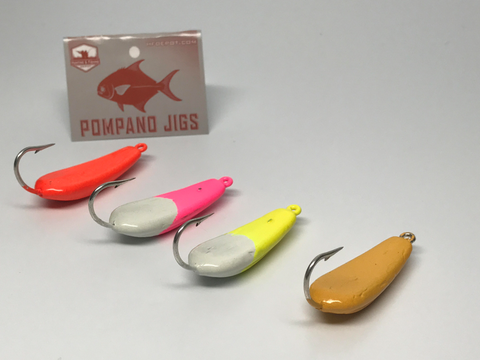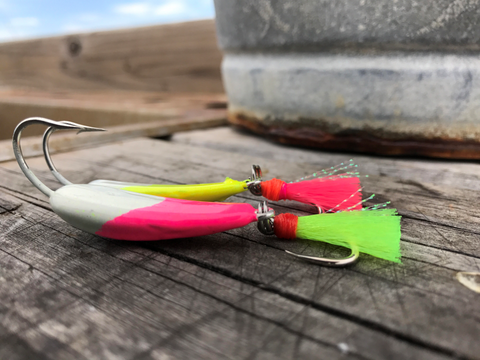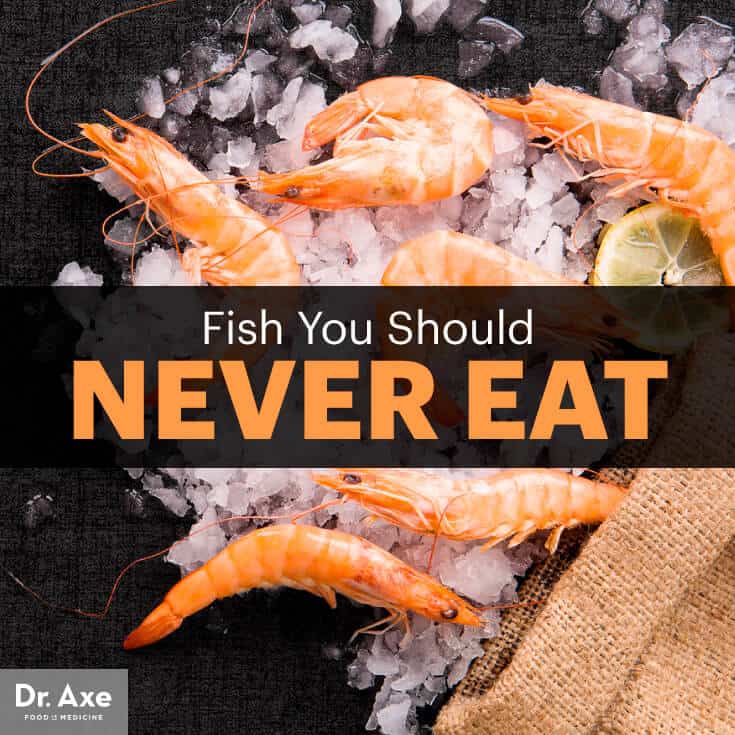Fish can serve as a power food … or an absolute inflammatory, toxic nightmare for your body. It all depends on what fish you choose. That why it’s so important to pay attention to (and avoid) the fish you should never eat.
It’s vitally important to get ample omega-3 fatty acids, and certain fish may serve as potent sources. But due to things like fossil fuel emissions, heavy metals like mercury are winding up in the water and building up in our fish. Unfortunately, low-level mercury poisoning from contaminated seafood is a real threat and can lead to devastating effects, especially in the developing fetus. (We’re now learning mercury impacts adults’ hearts in very concerning ways, too, including heart attacks and hypertension.)
There are other reasons to avoid certain species on the fish you should never eat list, too. Some fish have been so overfished that they are on the brink of collapse. And losing them could impact the ocean ecosystem in a way that could lead to a cascading effect, impacting so many other species we rely on for nutrition, too. Luckily, there are healthy, low contaminant choices with stable populations that serve as much smarter choices.
Let’s take a look at fish you should never eat, plus healthier options. (Of course, the healthy omega-3s found in fish actually come from the fish eating phytoplankton, so you could always bypass fish and go straight to the source for your omega 3s.)
Fish You Should Never Eat
1. Tilapia
Did you know that in some regards, eating tilapia is worse than eating bacon? In fact, the shift to eating more farmed fish like tilapia is leading to highly inflammatory diets, according to a 2008 study published in the Journal of the American Dietetic Association. (1)
Wake Forest University School of Medicine researchers say tilapia is one of the most widely consumed fish in America. The problem with that? It contains very low levels of beneficial omega-3 fatty acids and, perhaps worse, very high levels of omega-6 fatty acids. That means the natural fish oil benefits found in this fish are not likely adequately boosting your omega 3s.
The low omega-3/high omega-6 ratio is a potentially dangerous food for people living with heart disease, arthritis, asthma and other allergic and autoimmune disease symptoms who are vulnerable to an exaggerated inflammatory response. This inflammation damages blood vessels, the heart, lung and joint tissues, skin and the digestive tract.
And get this. Wake Forest researchers found that farm-raised tilapia, as well as farmed catfish, “have several fatty acid characteristics that would generally be considered by the scientific community as detrimental.” Tilapia harbors higher levels of potentially detrimental long-chain omega-6 fatty acids than 80-percent-lean hamburger, doughnuts and even pork bacon. (2)
2. Atlantic Cod
Historically, Atlantic cod is a species proven to be vitally important to feeding the New World civilization and early colonization of the Caribbean Sea. But the heavy fishing over the last thousand years has taken its toll. In the late 1990s, catastrophe struck: the fishery collapsed.
Although the female cod releases more than a hundred millions of eggs, only a few are able to survive to adulthood. According to Oceana, scientists agree that North Atlantic food webs have fundamentally changed as a result of the Atlantic Cod collapse, and the species is currently considered vulnerable to extinction. (3)
If you’re a fan of cod liver oil, make sure it’s not sourced from Atlantic cod. The best cod source comes from Alaskan cod caught with a longline, pot or jig. (Call the manufacturer and ask how the fish is caught if it’s not apparent.) Just be aware this and other types of cod can be moderately high in mercury. (4)
3. Atlantic Flatfish (Atlantic halibut, flounder and sole)
Due to historical overfishing and contamination levels, it’s best to leave these fish in the sea. While some organizations say Pacific halibut is a better option, there are some issues with that.
For starters, in 2014, Oceana, the largest ocean conservation group in the world, conducted an investigation using data from the National Marine Fisheries Service. It identified the nine worst fisheries in the U.S. based on “wasted bycatch.” Yes, the data showed commercial fishermen in the U.S. throw about 2 billion pounds of “bycatch” overboard each year. That’s equivalent to about a half-billion seafood meals. The California gillnet fishery that targets halibut was identified as one of the worst. If you’ve eaten U.S. halibut, there’s a good chance it came from this damaging fishery, according to the report. (5, 6)
4. Caviar
Beluga sturgeon are ancient fish that are highly sought for their fish eggs, aka caviar. In fact, this fish grows to be very large and can live to be 100 years old. A single fish can carry several hundred pounds of caviar, making the caviar worth up to $3,500 a pound. Oceana says this makes the Beluga sturgeon the most valuable fish in the world to fisherman. (7)
According to Oceana, the fish that produces this prized caviar is in major trouble:
It is completely gone from several seas/rivers in which it used to live, and scientists fear that it is critically endangered. In other words, it is very highly vulnerable to extinction across its entire range. Without further protection and enforcement of existing efforts, we may forever lose one of the biggest, most interesting fishes in the world.
As a much healthier and more sustainable alternative, try “poor man’s caviar.” It’s one of my favorite eggplant recipes. Or tap into black-eyed peas benefits by created “Texas caviar.”
If you absolutely cannot give up caviar, Seafood Watch recommends caviar from blue sturgeon raised in recirculating aquaculture systems in the U.S. Beluga sturgeon, including caviar, is a “Best Choice” when farmed in closed tanks in the U.S. That’s because closed tanks often have less waste, disease, escapes and habitat impacts than other aquaculture systems. (8)
5. Chilean Seabass
Actually named the Patagonia toothfish, seafood distributors started marketing this deep-sea predator fish as “Chilean seabass” because it sounded less intimidating. It worked. Now common on menus around America, Chilean seabass overfishing has left this species in serious trouble.
Aside from that, I consider this a fish you should never eat due to elevated mercury levels, too. Environmental Defense Fund notes harvesting this fish from Chile is especially problematic, as it accounts for about 20 percent of U.S. imports and is plagued by poor management and bycatch problems. (9, 10)
6. Eel
Monterey Bay Aquarium’s Seafood Watch places eel on its “Avoid” list on its sushi guide. An eel, also called unagi on many sushi menus, is slow to mature and has been overfished in many parts of the world, bringing some populations to collapse. (11) The news of the eels’ plummeting numbers (and finding out about its incredible migration) may hopefully make the fish harder to swallow. (12)
This is leaving even Asian countries looking to American eels, which is threatened among U.S. populations, too. That’s a problem because eels are super important when it comes to protecting our water supplies. In Delaware River, the longest undammed river East of the Mississippi River, eels are an integral part of spreading mussel populations that serve as natural water filters. Think of them as one important piece of the puzzle when it comes to nature’s Brita filter. (13)
Aside from overfishing problems, eels tend to readily absorb and store contaminants like endocrine disruptors like PCBs and flame retardants. In certain states like New Jersey, river eels are so contaminated even a grown man is advised to eat no more than one eel a year. (14)
7. Farmed Salmon (Atlantic or Wild-Caught)
Americans consume a lot of salmon. Unfortunately, the majority is the unhealthiest kind.
If there was ever a fish you should never eat, this is it. And for a number of reasons. The dangers of farmed fish, particularly farmed salmon, are enough to make your stomach turn. Most salmon marketed as “Atlantic” salmon is farmed, meaning fish are raised in conditions that have been shown to be ridden with pesticides, feces, bacteria and parasites. (15)
It’s illegal to fish wild Atlantic salmon because they’re listed as endangered under the Endangered Species Act. In fact, even with current protections and efforts to restore the species, there’s up to a 75 percent chance U.S. Atlantic salmon could be extinct by 2100. Farmed salmon aquaculture is a huge reason the species can’t rebound, along with other issues like climate change, water pollution and water extraction. (16)
Here are a other reasons inflammation-boosting farmed salmon needs to be a fish you should never eat:
An October 2016 study found omega-3 levels in farmed salmon are rapidly dropping and are half of what they were five years ago. Part of the reason for the nutrient loss is salmon farm feed contains less ground anchovy content. The high demand for farmed salmon feed is causing anchovy numbers to crash, so less is now being used in salmon feed patties. (17) (This is another argument for eating lower on the food chain.)
University of New York at Albany researchers found dioxin levels in farm-raised salmon to be 11 times higher than those in wild salmon. Dioxins are classified as “dirty dozen” chemicals that are stored in fat cells. Their half life is 7 to 11 years. The environmental pollutants are linked to cancer, organ damage and immune system dysfunction (18, 19)
A 2011 study published in PLoS One found mice-eating farmed salmon actually showed weight gain and an increased risk of metabolic syndrome and type 2 diabetes symptoms. (20) The risk comes from the persistent organic pollutants, or POPs, that tend to be high in farmed salmon. POPs looked at in this study include organochlorine pesticides, dioxins and PCBs.
A 2011 Food and Water Watch aquaculture report highlighted some concerning statistics. Hundreds of thousands of farmed fish escape into the wild. These fish are often carrying “super lice” parasitic hitchhikers that even the harshest chemicals no longer kill. Some even carry other diseases that can debilitate nearby wild fish populations. Farmed salmon have also been treated with banned pesticides, another serious toxicity concern. (21)
Fish farms threaten other sea life in other ways too. And remember: Fish farms don’t really combat overfishing: they contribute to it. Salmon, for instance, are carnivores. It takes about 2½ to 4 pounds of other fish to create the salmon chow needed to produce 1 pound of farm-raised salmon. The overfishing of wild sardines, anchovies, mackerel, herring and other fish upset natural ecosystems. “We are not taking strain off wild fisheries,” agricultural economist Rosamond L. Naylor told the Los Angeles Times back in 2002. “We are adding to it. This cannot be sustained forever.” (22)
In November 2015, the Food and Drug Administration approved the sale of genetically engineered salmon and will not require any labeling, leaving consumers in the dark. It was approved despite findings the GMO salmon doesn’t actually grow as fast as its creator claims. (23, 24)
Luckily, wild-caught Alaskan salmon is one of the best seafood choices you can make, so you have a great alternative here.
8. Imported Basa/Swai/Tra/Striped Catfish (Often Labeled “Catfish”)
These are popping up as trendy new menu items all over America, but what you’re likely getting is a fish called pangasius, a fish that wholesales for $2 a pound. (25) I consider this the #1 filthiest fish on the menu.
A 2016 study found 70 to 80 percent of pangasius samples were contaminated by Vibriobacteria — the microbes behind most cases of shellfish poisoning. Raw or undercooked pangasius, the authors warned, could pose a hazard to consumers. (26)
Beyond the ick factor, these pangasius ponds in Vietnam have given birth to “the most intensive and productive food production system on earth.” Aside from destroying important river life and wetlands, this fish factory farming method results in fish swimming in waste and sludge. They’re also treated with a broad range of antibiotics, in addition to pesticides and disinfectants.
The antibiotics used include several that are characterized as critically and highly important for human health according to the World Health Organization (WHO). In 2017, Europe rejected at least 17 pangasius shipments due to nitrofuran antibiotic residues. (27) All of this antibiotic abuse makes the issue of stopping superbugs that much harder.
The U.S. isn’t immune, either. In fact, an August 2016 report shows a U.S. catfish inspection agency recently turned away 40,000 pounds of imported catfish due to contamination issues. This includes fish testing positive for malachite green, a veterinary drug used to treat sick fish. (28)
In other imported “catfish” crackdown news, the owner Virginia Star and International Sea Products was actually sentenced to five years in prison in 2015 for importing $15.5 million worth of pangasius “catfish” and marketing it as sole, grouper, flounder, snakehead, channa and conger pike, a type of eel. DNA tests revealed that the frozen fish was in fact Pangasius hypophthalmus, a fish in the catfish family marketed under approved trade names including swai or striped pangasius. (29)
If you see swai, basa, striped catfish or any type of imported catfish on the menu, run. And take it as a sign that the restaurant isn’t taking seafood safety or sustainability seriously.
9. Imported Farmed Shrimp
Is shrimp good for you? When it comes to farmed shrimp, which accounts for about 90 percent of the shrimp we consume, the answer is a resounding “no.” And given shrimp accounts for a whopping 30 percent of all seafood we import, and the fact that Americans eat about 4 pounds of it a year, it’s important to learn the facts. (30)
A few fast facts that landed farmed shrimp on the fish you should never eat list:
In 2009, Italian researchers discovered that 4-hexylresorcinol, a food additive used to prevent discoloration in shrimp, possessed estrogen-like effects. This newly classified xenoestrogen could reduce sperm count in men and increase breast cancer risk in women. (31, 32)
An AP investigation uncovered a slavery network in Thailand dedicated to peeling shrimp sold around the world. “Shrimp peeled by modern-day slaves is reaching the U.S., Europe and Asia.” (33) In 2007, Thailand alone exported about $1.24 billion to the United States, according to Food and Water Watch.
All but one of the pesticides used globally in shrimp production are banned for use in U.S. shrimp farms. Only a diluted form of formaldehyde, called formalin, is approved for U.S. shrimp farms. (Formalin is also a potential carcinogen.)
Shrimp farm pond waters are often treated with neurotoxic organophosphate pesticides linked to symptoms of ADHD, memory loss and tremors. Malachite green, a potential carcinogen, is often used to kill fungus on shrimp eggs. Once it has been used, malachite green will stay in the flesh of shrimp for a very long time – more than 200 days in water that is 50 degrees F. (34)
Food and Water Watch notes that rotenone is a chemical used to kill off fish living in the pond before it’s stocked with young shrimp. If inhaled, it can cause respiratory paralysis. Studies have also linked rotenone to Parkinson’s symptoms in mice.
Shrimp farm ponds are often shocked with organotin compounds to kill mollusks before stocking with shrimp. These hormone-disrupting chemicals mimic estrogen and have been dubbed “obesogens.” That mean they mess with the hormonal system in a way that predisposes someone to obesity, regardless of what they eat. (35)
Food and Water Watch stated, “On average, an intensive shrimp operation only lasts for seven years before the level of pollution and pathogens within the pond reaches a point where shrimp can no longer survive.”
It’s clear farmed shrimp is unhealthy and unsustainable. It takes up to 2.8 pounds of wild fish to produce just one pound of industrial shrimp! But to be quite frank, I don’t think “healthy” shrimp exists. Even if you can somehow harvest them naturally in a wild-caught environment free of toxins, I still wouldn’t consume them because they are naturally bottom feeders. If you must eat shrimp, Monterey Bay’s Seafood Watch recommends the U.S. farmed version or Alaskan shrimp. (36)
Many tout wild shrimp from the U.S. Gulf as a sustainable option, but there are major concerns with bycatch. In fact, Oceana named Southeast Shrimp Trawl Fishery one of the nine dirtiest fisheries in the U.S. For every pound of shrimp landed, 1 pound of billfish is discarded and thousands of sea turtles are killed annually, the organization notes.
Seriously? You still want to eat shrimp? Just be forewarned: Oceana also uncovered seafood fraud in the shrimp department. Using DNA testing, its team discovered that 30 percent of shrimp samples tested were mislabeled. A whopping 25 percent of shrimp samples that were labeled as wild or presumed to be wild (often called “Gulf”) were actually farm-raised shrimp. (37)
10. Imported King Crab
About 75 percent of king crab sold in the U.S. in imported from Russia, where unsustainable fishing practices are common. Although Alaskan king crab legs legally can only be called that if they’re harvested from Alaska, widespread mislabeling is the norm. For instance, many red king crabs caught in Russia under questionable practices are marketed as Alaskan king crab legs.
Because you should avoid imported king crab at all costs, be really sure of where those crab legs came from before you order them. If the label makes claims like “imported” and “Alaskan,” something is clearly wrong. (38) (Check out Seafood Watch’s complete crab recommendations for more info.)
11. Orange Roughy
One of the longest living marine fish species, orange roughy can live to be 150 years old. Generally known as slimehead in the scientific community, seafood marketers had other ideas for this fish and gave the species a more appetizing name. The end result was a severely overfished species.
Since orange roughy don’t reach sexual maturity until at least 20 years old, they are very slow to recovery. According to Oceana: “The extremely long lifespan and the late age at maturity imply that a decimated population may take a half century or longer before it can recover.” (39)
Beyond that, orange roughy, which is a larger fish that hangs out near the ocean floor as an adult, is known to have higher mercury levels. (40)
12. Shark
Sharks are commonly found on fish you should never eat lists for several reasons. As bosses of the sea, they are very high on the food chain. That translates to higher mercury levels you should avoid in both foods and supplements.
But aside from that, most shark species, which are slow to mature and don’t have a lot of offspring, are severely depleted. Reasons include:
Sharks being caught accidentally by the thousands and discarded as waste by tuna and swordfish longline fishers.
A high demand for shark fins for Asian cuisine.
Most sharks mature slowly and have few offspring. (41)
13. Atlantic Bluefin Tuna
A highly sought-after sushi ingredient, it’s best to say no thanks to this menu item. Atlantic bluefin tuna lands on the fish you should never eat land for a few reasons. First, it’s been overfished to the point of near extinction. But due to its high demand for sushi, fisheries managers are still allowing commercial fishing to target it. (42)
Often referred to as Hon Maguro on sushi menus, this simple means bluefin tuna and should be avoided at all costs. A better sushi choice would be katsuo/skipjack tuna caught through Pacific troll or pole and line methods only. (43)
Sadly, bluefin tuna numbers are at just 2.6 percent of historic population levels. And September 2016 negotiations aiming to improve the fish’s fate did not bode well, with Pacific fishing nations refusing to agree to new catch restrictions or meaningful conservation efforts. (44)
Aside from the obvious population collapse and extinction threat, this is also a large predatory fish that harbors higher levels of mercury, so it’s best avoided. (45)
And when you do eat sushi, make sure you know what you’re getting. In 2015, a Santa Monica restaurant and two sushi chefs were charged for selling whale meat, including meat from the endangered sei whale. The restaurant, which has since closed, had labeled the whale as fatty tuna to hide its true identity. (46) (I bet my vegan sushi recipe is sounding pretty good right now, right?)
14. Swordfish
Mercury is the main concern when it comes to avoiding swordfish. This large, predatory fish contains elevated levels. In fact, mercury in this fish is so high Environmental Defense Fund, using Environmental Protection Agency guidance, recommends women and children avoid it altogether. For men, the recommendation is to eat no more than one serving a month. (47)
15. King Mackerel
Mackerel is certainly packed with healthy omega-3s. But when it comes to certain types of mackerel, you could be getting more than you bargained for. That’s certainly the case with king mackerel — the Food an Drug Administration warns women and children to outright avoid it. (48) Avoid Spanish mackerel, too. That’s been shown to harbor elevated mercury levels. (49)
Luckily, Atlantic mackerel is high in omega-3s and low in mercury and is rated a top choice for health and sustainability.
16. Grouper
Grouper is on the list when it comes to fish you should never eat due to high mercury levels. (50) This species is also highly vulnerable to overfishing, so it’s best to take a pass when you see it on the menu. (51)
Grouper is also the common target of seafood fraud. In 2015, an investigations found that more than a third of 19 restaurants in Atlanta sold pangasius (that “Vietnamese catfish” raised in filthy conditions) as grouper. Testing also found that “grouper” for sale is actually often king mackerel or whitefin weakfish, a cheaper alternative. Between one-fifth to more than one-third of the halibut, grouper, cod and Chilean seabass samples were mislabeled. (52)
17. Sturgeon
As I shared in the caviar section, Beluga sturgeon are especially targeted for their eggs. But other sturgeon are at risk, too. Some even appear on restaurant menus. According to the International Union for Conservation of Nature, sturgeon are “more critically endangered than any other group of species”. (53)



























